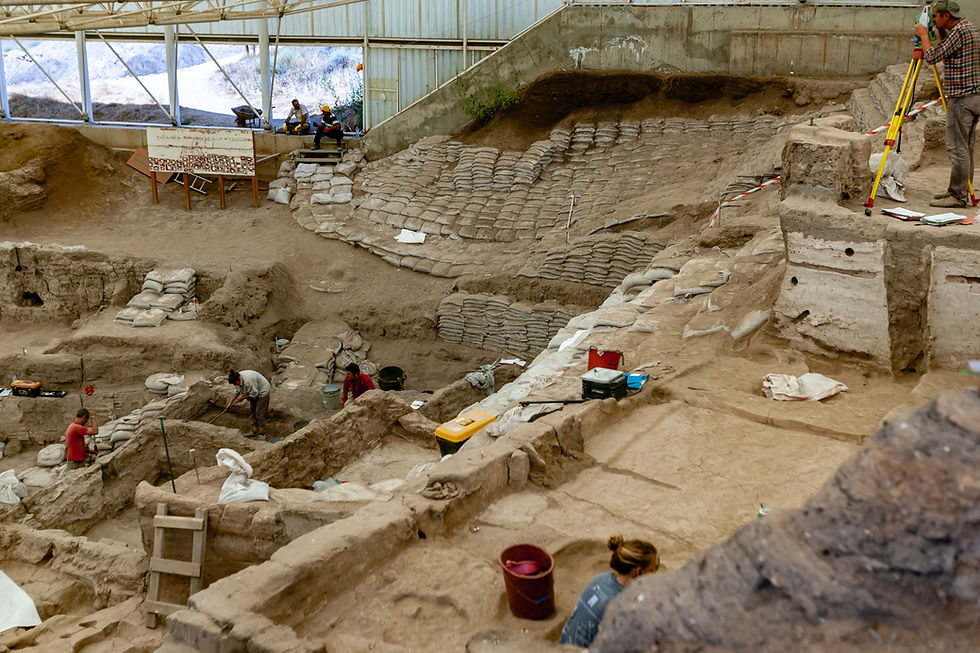The Science Behind Lost Ancient Technologies
- Aditi Rao

- Apr 24
- 4 min read

Ancient civilizations continue to capture our interest not just through their rich histories and cultures, but also through their remarkable technological achievements.
The Great Pyramids, the intricate aqueducts of Rome, and the sophisticated calendars of the Maya highlight human creativity and problem-solving skills.
In this exploration, we will examine the science behind these fascinating feats and consider how they were accomplished, as well as the lessons we can apply to today's world.
The Foundations of Ancient Engineering
The engineering capabilities of ancient civilizations were remarkable. They were not based on randomness but rather on a deep understanding of physics and mathematics. The ancient Egyptians, for instance, used simple machines like levers and ramps to move massive stone blocks weighing several tons, essential for the construction of their grand monuments.

Recent studies of Egyptian quarry sites reveal that these builders combined water and sand as lubricants. This allowed them to slide heavy stone blocks more easily across the desert sands. By implementing this clever solution, they demonstrated not only their engineering skills but also their ability to manipulate natural resources effectively.
The Mystery of Hydraulic Engineering
Ancient Rome excelled in hydraulic engineering, with aqueducts serving as a prime example. These structures transported water over vast distances, enhancing urban life by improving sanitation and public health. Roman engineers constructed aqueducts that spanned dozens of miles. For instance, the Aqua Appia, completed in 312 BCE, was Rome's first aqueduct and transported water over 10 miles.

Research into these aqueducts shows that Roman engineers possessed an advanced understanding of hydrology and materials science. They often used volcanic ash mixed with lime to create a durable concrete resistant to water damage. Many of these aqueducts are still standing today, illustrating the innovative engineering techniques that have stood the test of time.
Astronomy and Navigation Technologies
Beyond engineering, ancient civilizations made substantial progress in astronomy. This advancement was vital for navigation and agriculture. The Maya built observatories like the one at Uxmal to track celestial events. They observed the movements of stars and planets carefully, which allowed them to create calendars that aligned with agricultural seasons. For example, they understood that the rising of the Pleiades in late April indicated the right time to begin planting crops.

Contemporary archaeoastronomers now use technologies like laser scanning to reveal ancient sites aligned with astronomical events. This connection between architecture and celestial observation confirms the sophisticated knowledge these cultures held about the universe, showcasing their ability to blend observation with mathematical principles.
The Role of Materials Science
Another critical aspect of lost ancient technologies is the materials used by ancient craftsmen. They often sourced materials locally, leading to innovations tailored to specific environmental conditions. For example, the Sumerians created ceramically-based tiles, demonstrating a sophisticated grasp of thermal dynamics that helps modulate temperature effects.

By employing petrographic analysis, researchers have explored ancient pottery and found that these artisans had refined techniques that enhanced durability. This level of craftsmanship indicates a sophisticated understanding of material properties, ensuring their creations could withstand time and wear.
Revival of Ancient Knowledge
Despite technological advancements today, much of ancient knowledge remains lost. The disappearance of texts and techniques has led modern scientists to resurrect ancient methods through experimental archaeology. This field involves recreating ancient technologies using period-appropriate tools and materials.
A notable example is the efforts to recreate Roman concrete. Studies show that the ancient version is often more resilient than many modern equivalents, with some exploring its longevity extending beyond two thousand years. These projects not only shed light on ancient practices but also inspire contemporary sustainable building techniques.
Challenges in Understanding Ancient Technologies
Understanding ancient technologies poses significant challenges. The lack of written records for many cultures means researchers must rely on archaeology and indirect evidence. This often leads to speculation regarding how these technologies functioned.

Moreover, the global trade routes and cultural exchanges of ancient times complicate the story of technological development. Ideas and techniques traveled and transformed as they crossed borders. For instance, the techniques used in Sumerian pottery may have influenced those in Egypt. This shared evolution opens discussions about originality and highlights the interconnected nature of ancient societies.
Insights into Ancient Ingenuity
Exploring lost ancient technologies invites us to reflect on our own capabilities. By uncovering the scientific principles behind these ancient accomplishments, we can learn valuable lessons for modern society. The sustainable practices and engineering insights from these civilizations resonate with current challenges.
As we continue to study and piece together the remnants of these technologies, it becomes clear that ancient civilizations held profound knowledge of the world around them. Their mysteries encourage us to broaden our understanding and inspire innovation that benefits future generations.



Comments